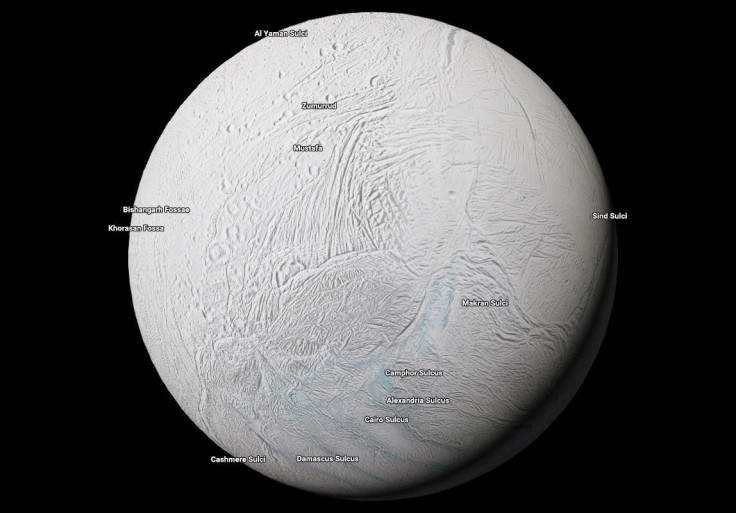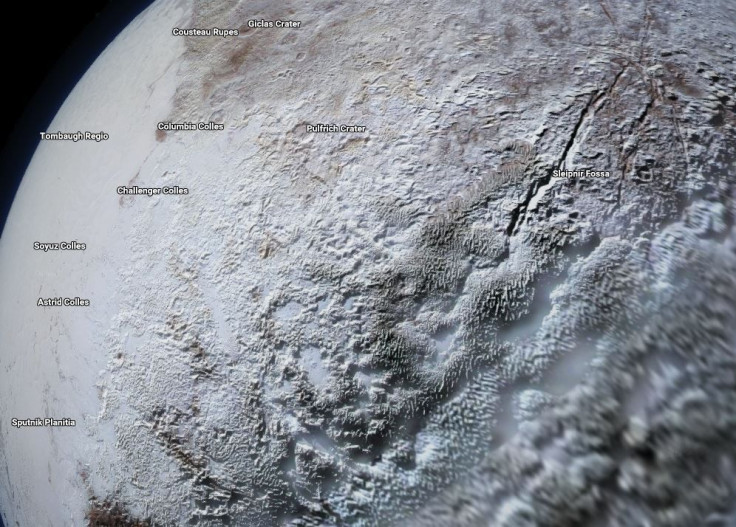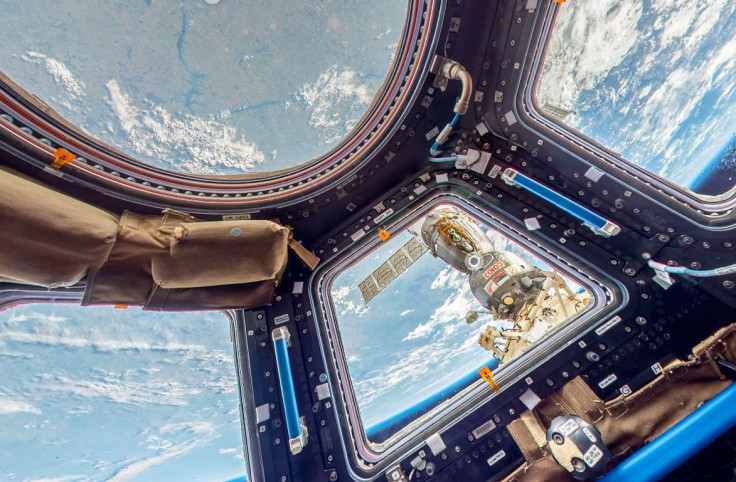Explore The Solar System On Google Maps: From Pluto To Saturn’s Moons
Google has added to its lineup of planets and moons that users can explore, bringing Pluto’s surface down to Earth as well as the moons of Saturn that NASA’s Cassini spacecraft spent its life studying.
Cassini went offline last month when it plunged into Saturn’s atmosphere, ending its service to our planet after years of exploring the outer solar system. But its memory lives on in Google Maps: The new heavenly bodies that the application added to its system include Saturn’s moons Enceladus and Titan.
The former moon, an ice-covered world, is where Cassini found evidence of a subsurface ocean and heat source as well as organic material that could be indications of life. Meanwhile, Titan is the only place in the solar system where liquid flows similarly to how it does on Earth — except that liquid is methane instead of water.
On Google Maps, users can journey to the moons and take a look around, exploring different topographical features and learning their names.
The worlds were constructed using photos the Cassini spacecraft sent back to Earth during its trip.
Other moons of Saturn have also been added. Dione, Iapetus, Mimas and Rhea are all there. Google put Jupiter’s moons Europa, Ganymede and Io into its lineup too.

Those three Jupiter satellites were among the first moons in the solar system to be discovered, after Earth’s moon. Galileo Galilei observed the three of them, along with Jupiter’s Callisto, in the early 1600s, and they have since become known as the Galilean moons. Io is known for its intense volcanic activity and Ganymede for being the largest moon in the solar system.
Europa is a point of interest because, like Enceladus, its icy surface may be hiding an ocean of water and an internal heat source, meaning it could potentially harbor alien life.
These moons around Jupiter and Saturn represent just a handful of the dozens that are orbiting each planet.
Outside of all the moons, new worlds added to the Google Maps feature include the planet Venus and the dwarf planets Pluto and Ceres.
Venus, which is close to the size of Earth, is our scorched inward neighbor with a thick atmosphere of carbon dioxide and strange weather patterns. Probes like the European Space Agency’s Venus Express have taken data from the planet but there’s still much to be learned about it.

The Google Maps data on Pluto includes the part of its terrain that look like skyscrapers of ice, a feature NASA has only recently started to understand. New research suggests methane ice built up on the surface but became eroded during climate changes, leaving behind the structures that the space agency compares to knife blades.
Apart from Cassini images, the Google Maps space exploration function was made with other data from both NASA and the ESA.
Mercury, Mars, the moon and the International Space Station were already available to explore, as was the Earth, of course. Aboard the ISS, users can explore the cupola — the observation point with windows that shows a view of the Earth below.

© Copyright IBTimes 2024. All rights reserved.





















